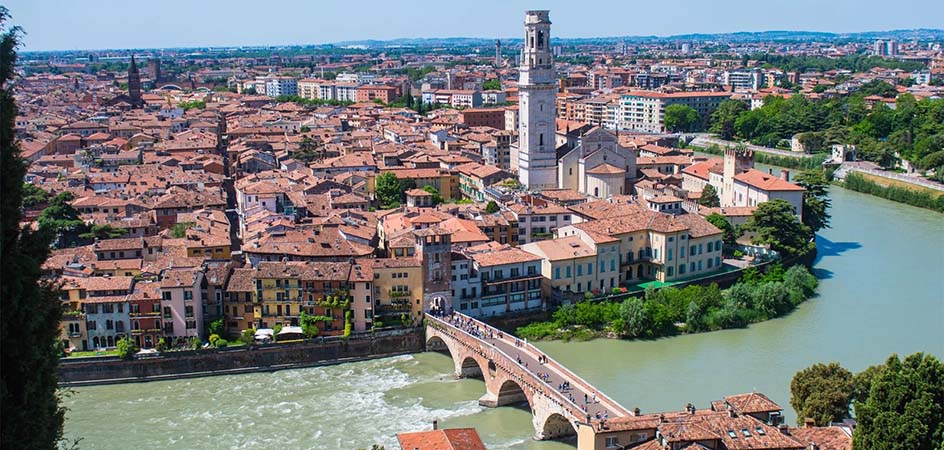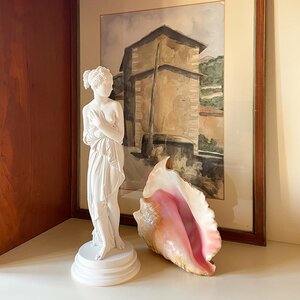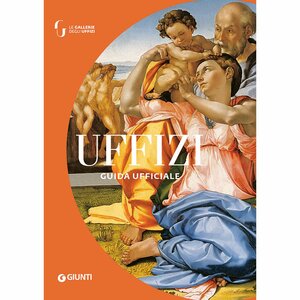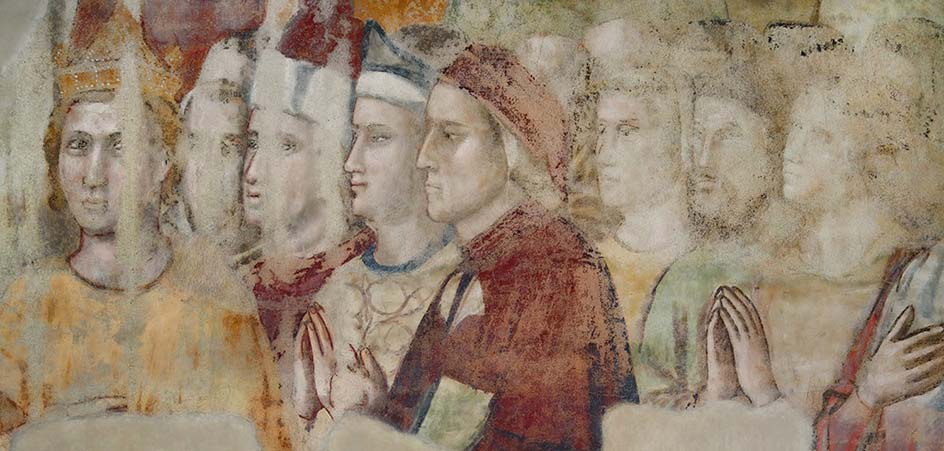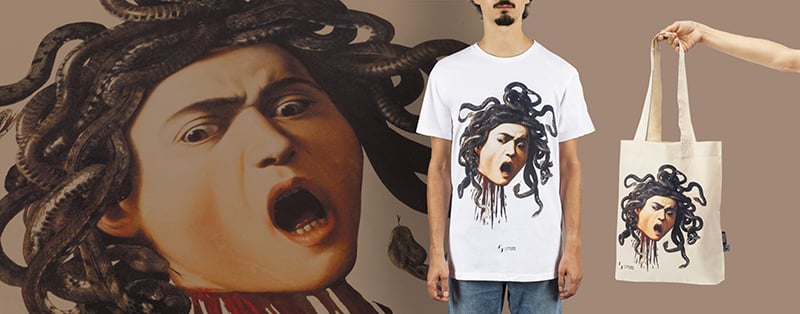Verona is not just the Arena and Juliet’s House: behind its most iconic landmarks lies a city capable of charming visitors in countless other ways. Strolling through its cobbled streets and lesser-known corners, you’ll encounter places rich in history and fascination —unmissable stops for any first-time visitor. Let’s explore some of its most remarkable attractions, masterpieces of art, architectural treasures, and unique atmospheres.
Five must-see historic monuments
Romantic and Roman—those two words perfectly sum up the poetic fame and ancient origins of this Veneto city, which continues to captivate lovers of both literature and history. For them, and for anyone visiting Verona for the first time, here are five unmissable sites.
1. The Roman Theatre
The Arena may be Verona’s most recognisable symbol, yet it’s not the only Roman-era monument in town. Located on the opposite bank of the Adige, the Roman Theatre is among the best-preserved theatres in northern Italy. Built in the 1st century BC, it was rediscovered much later thanks to excavations by Andrea Monga (1794–1861), a wealthy merchant and owner of the land. Today, little remains of the original structure, but the tuff walls, stage area, and surviving tiers of seats still hint at its lost magnificence.
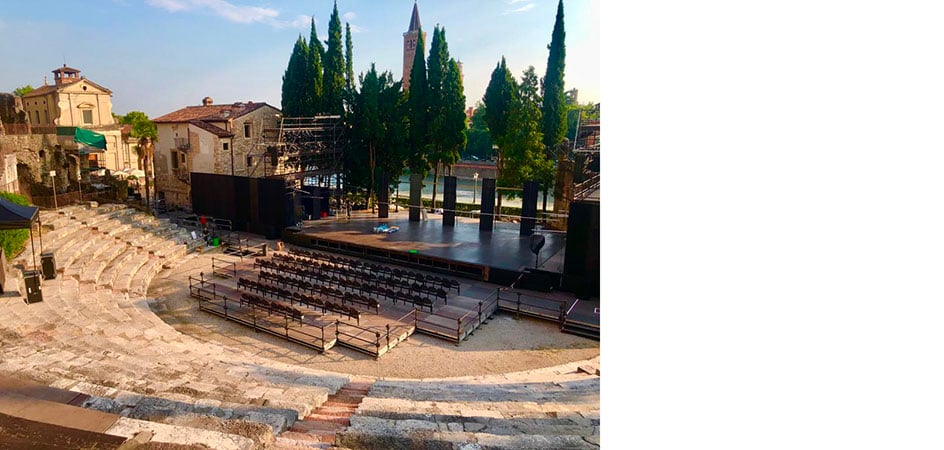
2. Ponte Pietra
Just a short walk from the Roman Theatre stands Ponte Pietra, probably the city’s oldest surviving Roman monument (it is thought to date back to before 89 BC). Its many reconstructions, collapses, and restorations tell not only of the bridge’s past events, but also the character of the Veronese people, revealing their resilience and deep connection to local history, which they regard as a living heritage to be preserved at all costs. In this sense, the most recent intervention is perhaps the most significant. It was 1957, and the bridge had lain in ruins for over ten years — ever since 1945, when the retreating German troops blew it up. The city decided to rebuild it exactly as it had been, recovering the stone and brick blocks from the riverbed to restore its iconic crossing over the Adige.
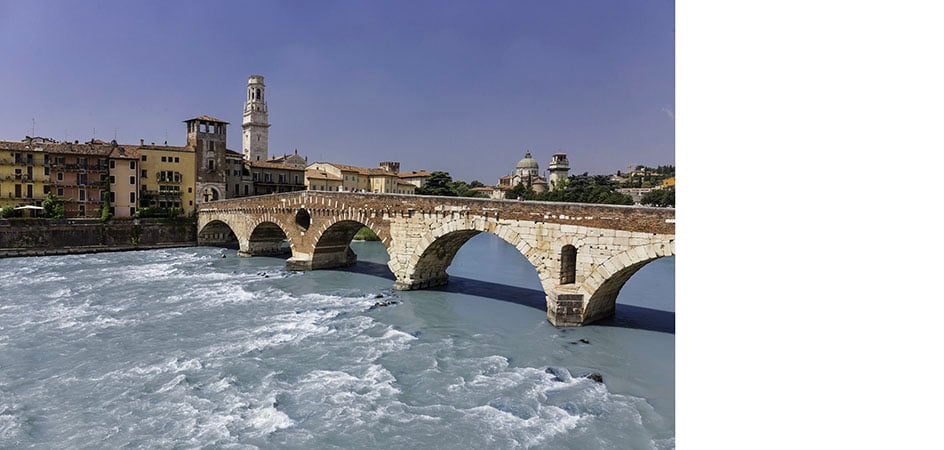
3. Porta Borsari
Heading back towards the Arena, you’ll find two more ancient monuments: Porta Borsari and the Arco dei Gavi. The former—an imposing city gate dating back to the 1st century BC—takes its name from the bursarii, medieval officials who collected episcopal tolls. Originally called Porta Iovia because of a nearby temple dedicated to Jupiter, it now preserves only its external façade, built in local white limestone, with two grand arches crowned by two tiers of windows.

4. The Arco dei Gavi
Just a few steps away, the Arco dei Gavi commemorates the noble Roman Gavi family who commissioned its construction. Its story, however, is far from linear: built along the Via Postumia in the 1st century AD by the architect Lucius Vitruvius Cerdo—whose signature is still visible—it was demolished by the French during the Napoleonic occupation because it obstructed military traffic. Thankfully, its preserved fragments allowed it to be reassembled beside Castelvecchio in 1932, where it can still be admired today.

5. The Scaliger Tombs
It’s impossible to talk about Verona without mentioning the Della Scala—or Scaliger—family, the powerful dynasty that ruled the city for over a century between the late 1200s and the 1300s. The heart of their power was Piazza dei Signori, still surrounded by historic buildings such as the Palazzo del Capitano and the Palazzo della Ragione. Their remains lie just a few steps away, in the Arche Scaligere (Scaliger Tombs), a magnificent funerary complex beside the Church of Santa Maria Antica. Among the sarcophagi, the canopied tombs of Cangrande I, Mastino II, and Cansignorio stand out as outstanding examples of marble sculpture and decoration in pure Gothic style.
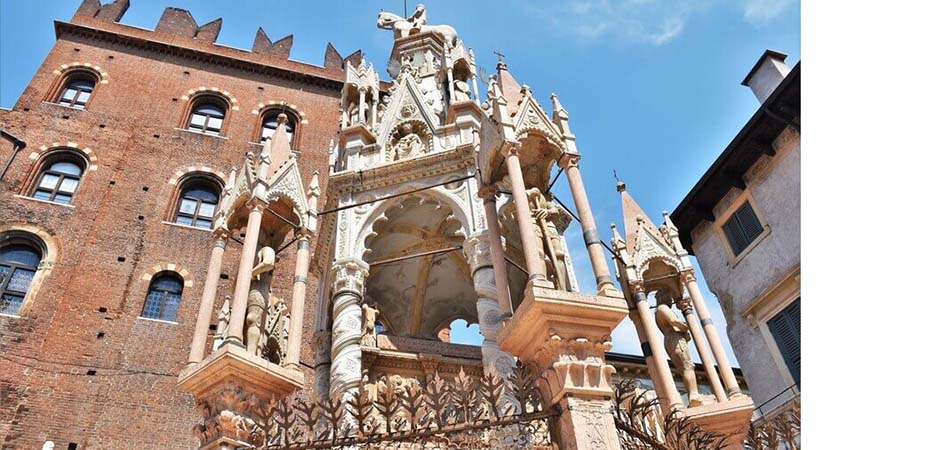
Museums and art venues: memorable collections and masterpieces
Beautiful both inside and out, Verona offers not only splendid walks among ancient monuments but also evocative museums and places of worship that preserve unique artistic treasures.
Castelvecchio Museum
The 14th-century Scaligero Castle, home to Verona’s Civic Art Collections since 1926, underwent a remarkable and highly successful restoration in the 50’s, carried out by architect Carlo Scarpa in collaboration with the museum’s director, Licisco Magagnato.
Today it contains over 600 works spanning the Middle Ages to the 18th century. The Veronese school holds a place of honour in the collection, featuring works by Pisanello and Paolo Caliari — better known as Veronese — as well as superb examples of Venetian painting by Jacopo and Giovanni Bellini, Jacopo Tintoretto, and Giandomenico Tiepolo.
Also on display are a remarkable group of Flemish paintings — portraits, still lifes, and landscapes — alongside medieval sculptures from a single local workshop, and collections of coins, weapons, drawings, and prints.
Walking through its galleries and admiring the masterpieces is like reliving the artistic vibrancy of the Scaliger court and the city as a whole.
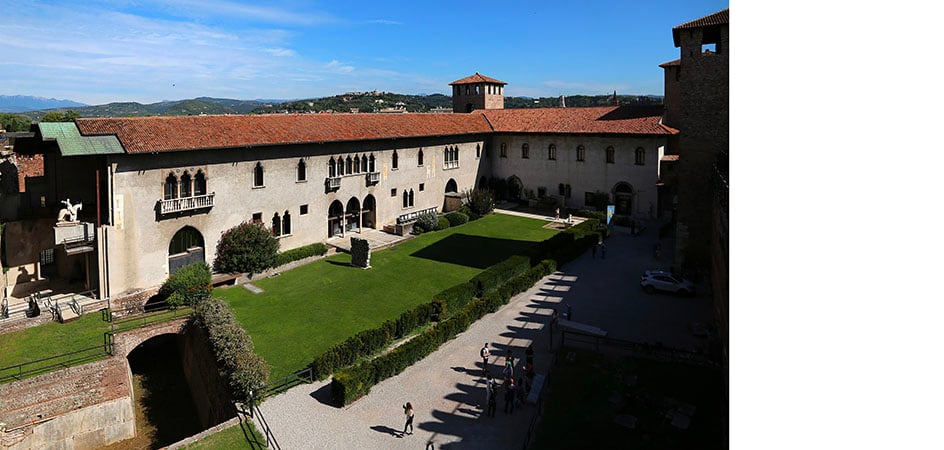
The Basilica of San Zeno
Sober yet majestic, the Basilica of San Zeno was first built in the 9th century and has since preserved the relics of Verona’s patron saint, from whom it takes its name. Various restorations have altered its appearance, which now largely matches that of 1138. The interior is divided into three levels: the pleban church with its grand columns and pillars, the crypt housing the saint’s relics, and the presbytery church, home to the celebrated Pala di San Zeno by Andrea Mantegna (c. 1460). Commissioned by Abbot Gregorio Correr, the triptych has remained on its original altar since completion. A brief interlude, however, compromised its authenticity: seized by Napoleon’s troops in 1797 and taken to France, it returned in 1815 minus its three predella panels, now kept in the museums of Louvre and Tours. The versions on display today are 19th-century copies.
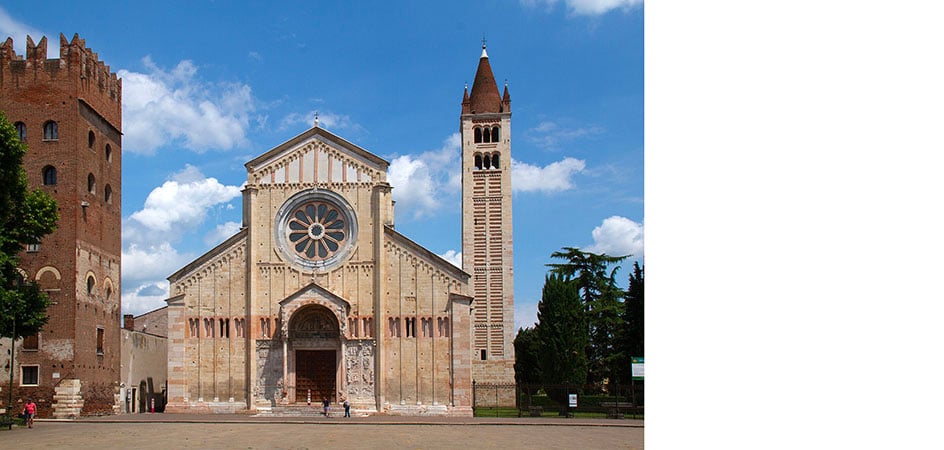
The Sacra Conversazione, depicting the Madonna and Child enthroned and surrounded by contemplative saints, has nonetheless lost none of its magnetic charm, thanks to Mantegna’s masterful hand — he also designed the frame himself. What gives the composition its originality is above all the unified treatment of the scene which, although divided into three panels, appears cohesive thanks to the shared setting and the landscape glimpsed behind the figures. The Madonna’s halo, echoing the Romanesque rose window of the Basilica, is instead a charming tribute to the church itself.
Are you interested in articles like this?
Sign up for the newsletter to receive updates and insights from BeCulture!
Palazzo Maffei House Museum
We end our visit in Piazza delle Erbe, an unmissable stop on any Verona itinerary. Once the Roman forum and heart of local commerce, the square takes its name from the spice market once held there. Surrounded by buildings and monuments reflecting successive dominations — from the Scaliger era to Venetian rule—it is dominated by Palazzo Maffei, with its refined Baroque façade. Today it houses the Museo Palazzo Maffei, the last stop on our tour.
In the rooms of the restored noble residence are displayed the works collected by the Veronese art lover Luigi Carlon—a collection remarkable for both variety and scope, ranging from 14th-century Verona to Oriental art, from the Historical Avant-garde movements to signature design pieces. The vibrant and inventive display, perfectly in tune with the diversity of the collection, guides visitors through original decorations and striking curatorial choices that reveal the refined taste and personality of its founder.
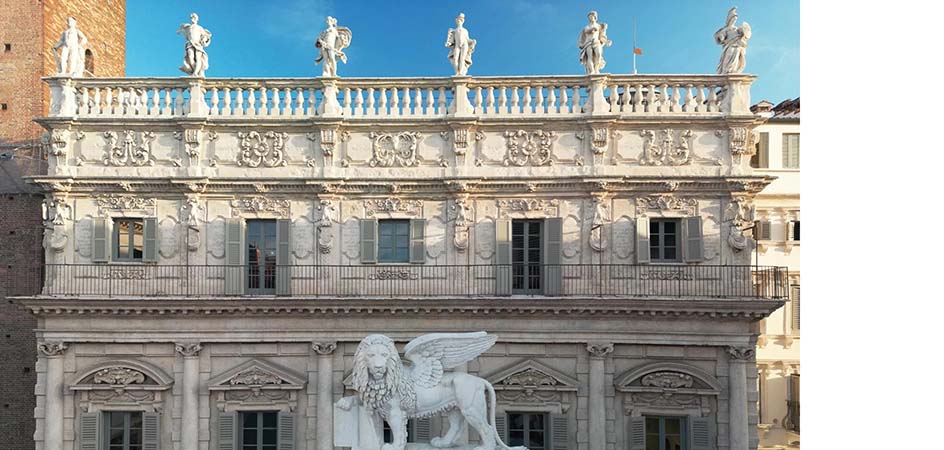
The Casa Museo di Palazzo Maffei is the perfect place to conclude this short journey through Verona—taking home not only the beauty of its landmarks, but also a touch of that tireless, passionate spirit that has always defined its people.


